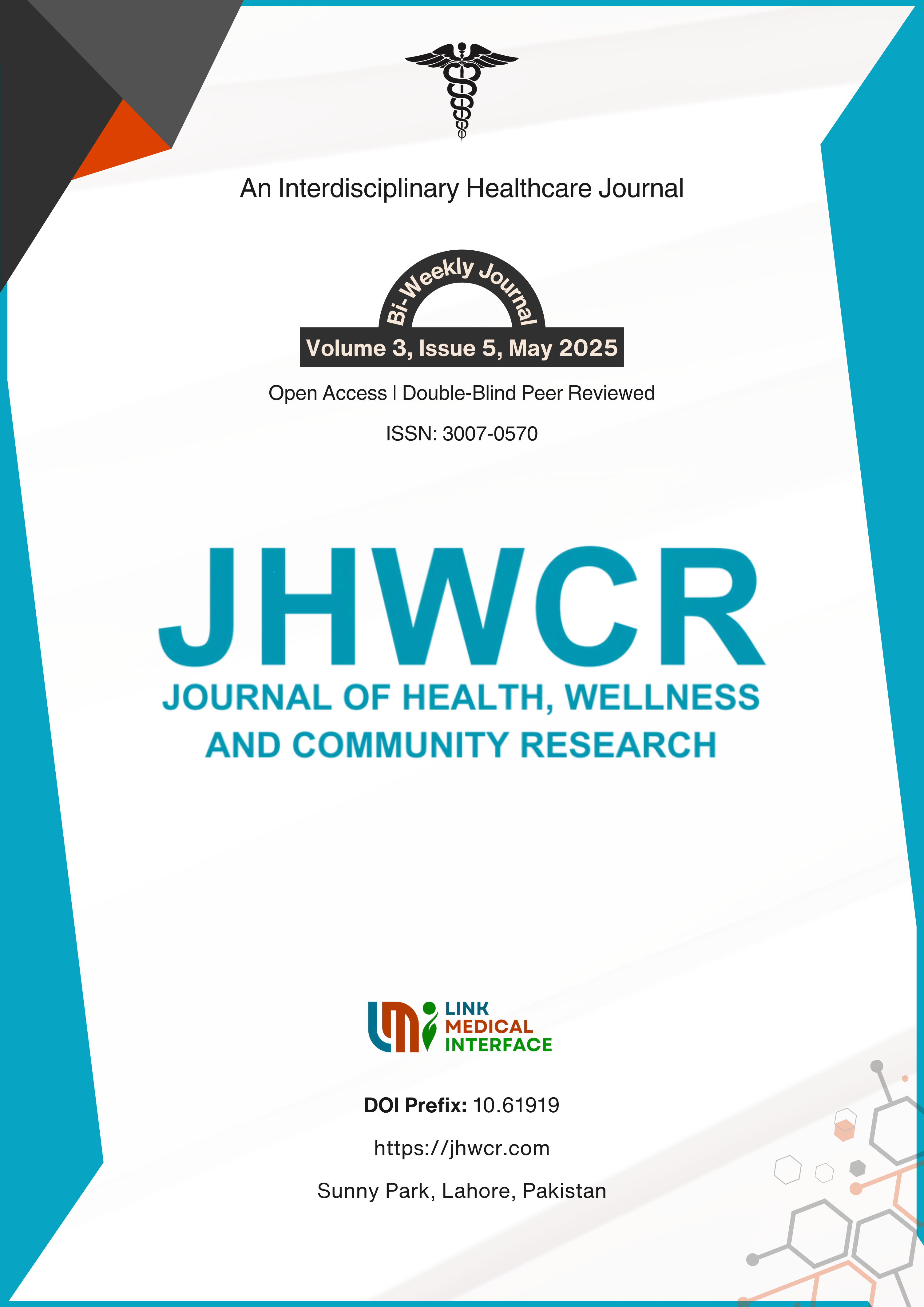Effects of Costophrenic Assisted Cough and Anterior Chest Compression on Outcomes in COPD
DOI:
https://doi.org/10.61919/Keywords:
COPD, Costophrenic Assisted Cough, Anterior Chest Compression, Sputum Production, Oxygen Saturation, Expiratory Flow Rate, Dyspnea Management, Pulmonary RehabilitationAbstract
Background: Chronic obstructive pulmonary disease (COPD) significantly impairs respiratory function due to persistent airflow limitation, often resulting in symptoms such as dyspnea, chronic cough, and mucus overproduction. Managing secretion clearance is crucial in COPD care, and assisted coughing techniques like costophrenic assisted cough and anterior chest compression are essential therapeutic interventions. These techniques may reduce the frequency of exacerbations and enhance patients' quality of life by improving mucus clearance.
Objective: The primary aim of this study was to compare the effectiveness of two assisted coughing techniques—costophrenic assisted cough and anterior chest compression—on clinical outcomes including sputum production, oxygen saturation (SaO₂), peak expiratory flow rate (PEFR), and perceived dyspnea in individuals diagnosed with COPD.
Methods: A randomized clinical trial was conducted involving 36 patients with confirmed COPD. Participants were randomly divided into two equal groups: Group A (18 patients) received costophrenic assisted cough, while Group B (18 patients) received anterior chest compression. Each group underwent the respective intervention on alternate days over a one-week period. Outcome measures—sputum production (assessed using a sputum diary), SaO₂, PEFR, and Borg dyspnea scores—were recorded at baseline, after the intervention week, and during a four-week follow-up. Data analysis was performed using SPSS version 25.0, with statistical significance set at p<0.05.
Results: The sample consisted of 72.2% male participants, with a mean age of 53.38 ± 6.07 years. Following the intervention, Group B exhibited greater improvement in SaO₂, increasing from a baseline of 90.94 ± 1.109 to 95.50 ± 1.689, compared to Group A’s improvement from 91.50 ± 1.46 to 94.83 ± 1.61. Likewise, PEFR improved more substantially in Group B, rising from 284.50 ± 48.04 L/min to 389.50 ± 26.69 L/min, in contrast to Group A’s increase from 286.66 ± 49.391 L/min to 340.00 ± 32.03 L/min. Borg dyspnea scores showed a greater reduction in Group B, decreasing from 7.44 ± 1.65 to 2.55 ± 1.096, compared to a reduction from 7.27 ± 1.526 to 4.00 ± 0.84 in Group A. All observed improvements were statistically significant (p<0.05).
Conclusion: Both costophrenic assisted cough and anterior chest compression proved effective in enhancing pulmonary outcomes in COPD patients. However, anterior chest compression consistently demonstrated superior results across all measured parameters, indicating its potential as a more effective technique for promoting airway clearance in the clinical management of COPD.
Downloads
Published
Issue
Section
License
Copyright (c) 2024 Sidra Afzal, Dure Shehwar, Danyal Ahmad (Author)

This work is licensed under a Creative Commons Attribution 4.0 International License.


